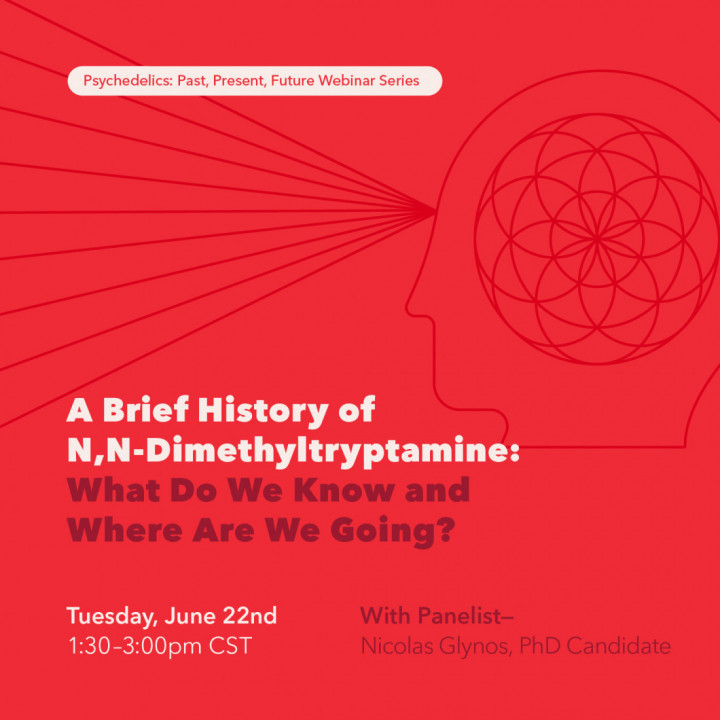
When: Jun 22, 2021 01:30 PM Central Time (US and Canada)
Topic: A Brief History of N,N-Dimethyltryptamine: What Do We Know and Where Are We Going?
Register in advance for this webinar:
https://zoom.us/webinar/register/WN_VZAX-o9PSe2USih47M11Ow
After registering, you will receive a confirmation email containing information about joining the webinar.
In this talk Nicolas Glynos from Molecular & Integrative Physiology at University of Michigan will examine research on N,N-Dimethyltryptamine (DMT). DMT is a psychedelic substance that is naturally produced by the mammalian body and hundreds of different plant species. It has been used for over 1,000 years in the form of ayahuasca as a ceremonial spiritual medicine in South American indigenous cultures. DMT was introduced to western science in the 1930s, and it played an important role in catalyzing the current psychedelic renaissance. Although the endogenous role of DMT in the body remains unknown, DMT is now being studied in a number of clinical trials aiming to treat a variety of mental and physical conditions.
The third speaker in the Centre for Access to Information and Justice (CAIJ) Psychedelics: Past, Present, Future Webinar Series.
Nicolas Glynos (Molecular & Integrative Physiology at University of Michigan) is focused on identifying intrinsic physiological and mechanistic biomarkers of visual hallucinations in waking, sleep, and diseased states, and is aiming to better understand the mechanisms that generate those phenomena across varied states of consciousness. Visual hallucinations can occur regularly in healthy individuals during dream sleep, as well as during a variety of other forms of sensory deprivation or physiological extremes, and they also accompany several forms of mental diseases and encephalopathies including schizophrenia and dementia. He is currently investigating an endogenously produced monoamine, N,N-dimethyltryptamine (DMT), that has structural similarity to the neurotransmitter serotonin, but produces short-acting but profound hallucinatory and psychedelic subjective experiences when administered exogenously. He uses a variety of molecular techniques in animal models to improve our understanding of the pharmacological and biological properties of this endogenous monoamine, along with signal processing of electroencephalographic recordings to clarify its role in higher brain function. He hopes that a better understanding of the physiological roles and biological activities of DMT will provide insight into the mechanisms that generate hallucinatory phenomena in different forms of healthy and diseased states.